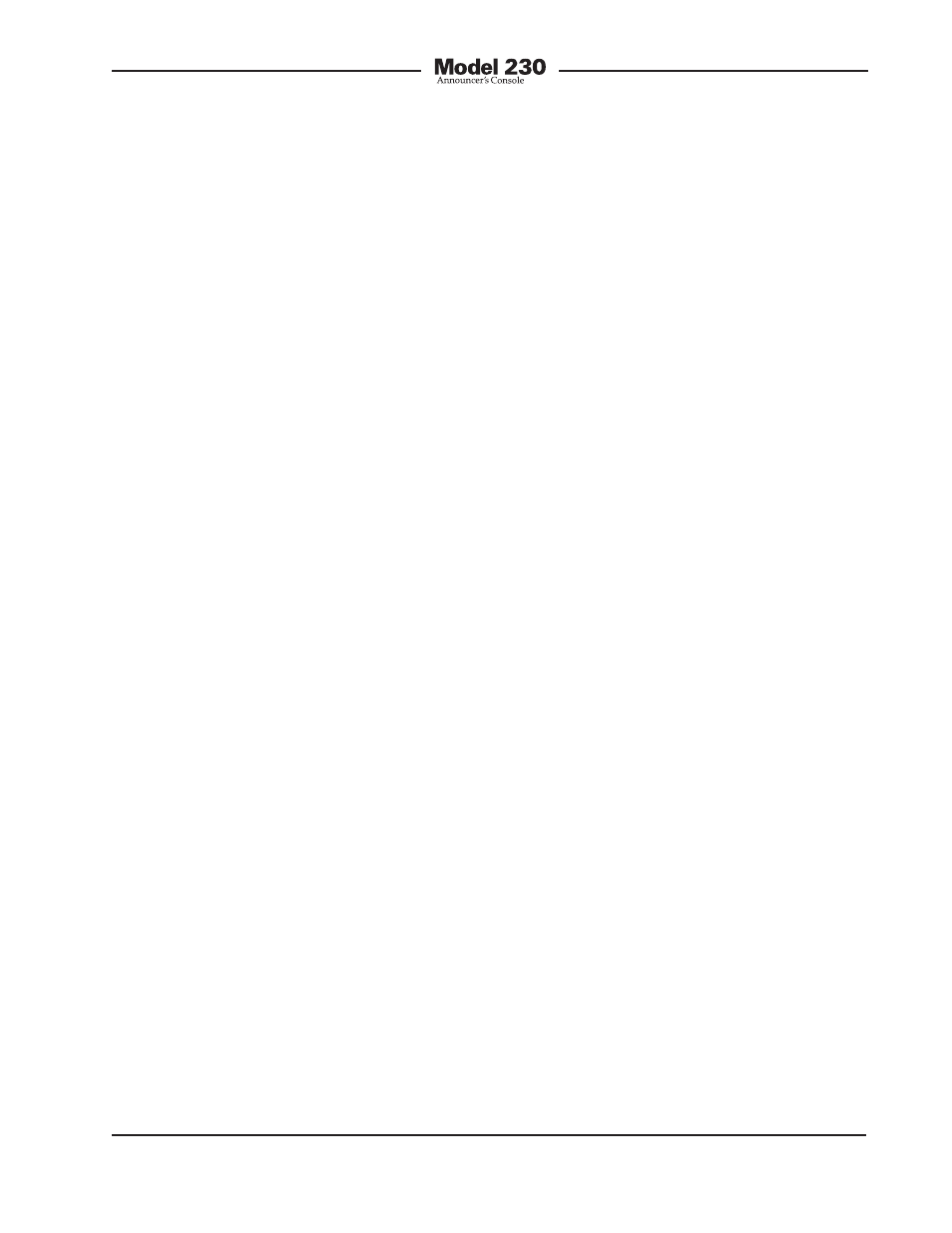Studio Technologies 230 2008 User Manual
Page 41

Model 230 User Guide
Issue 7, October 2008
Studio Technologies, Inc.
Page 41
their specified minimum. Typically, if the
Model 230 is being powered by an exter-
nal 24 volt nominal power source, normal
operation will continue until the input falls
to the 18-20 volt range. As the input volt-
age drops below this range the Model
230’s internal power supply will have
reduced stability, operating in this manner
until its low-voltage shutdown circuit halts
operation. Note that as the input voltage
moves down from 24 volts the input cur-
rent will rise proportionately to make up
for the loss of power.
Using the intercom line to provide Model
230 power shouldn’t prove to be a prob-
lem. Power supplies associated with
broadcast and production intercom sys-
tems are designed to support multiple
belt-pack and related devices. In the “big
scheme of things,” connecting a Model
230 shouldn’t add a significant load.
If an IFB circuit is powering the Model 230,
maintaining the required voltage and cur-
rent is more critical. Should the voltage or
current fall below the specified minimum,
the Model 230’s power supply circuit will
again become unstable. This will become
an issue as noise will be induced into
the IFB circuit’s audio signals. The reason
is simple: an IFB circuit “multiplexes”
3-conductors so that they carry both pow-
er and audio signals. If sufficient amounts
of voltage and current are supplied to the
Model 230’s IFB input, the Model 230’s
power supply will draw a steady amount
of energy. This will not disturb the analog
signals on pin 1 (common for DC and au-
dio) and pin 2 (DC and channel 1 audio).
But if the Model 230’s power supply is
not supplied with sufficient energy (volts x
amps) it will try to draw what it needs from
the IFB circuit, becoming unstable in the
process. The IFB circuit’s audio signals
will be corrupted by the power supply’s
attempt to draw enough power. Instead
of nice clean audio there will be squeaks,
squeals, and some awfully funky noises
added. Again, in a low-voltage or low-
current situation, no damage will be done
to the Model 230’s circuitry but correct
operation will not be possible.
In most cases maintaining the IFB circuit’s
required voltage and current shouldn’t
be a problem. But issues may arise due
to malfunctioning IFB circuit sources or
poor interconnect cabling. Typically, ex-
cessive cable length won’t be the cause
of a problem. Generally, problems will be
caused by broken or damaged connec-
tor pins, dirty patch points, or damaged
(partially open) cable conductors. Measur-
ing the IFB circuit’s voltage and current
draw directly at the Model 230’s IFB input
connector will quickly identify if there’s a
power issue.
And now for another shameless “plug”
for other Studio Technologies products:
Frankly, most devices that supply IFB
circuits for broadcast applications use
outdated technology that provides medio-
cre performance. That’s why Studio Tech-
nologies developed high-performance
IFB interface units. These products do an
excellent job of providing power and audio
to connected devices such as the Model
230. However, unlike other products, the
power supplied by the IFB circuits created
by these units maintains their output volt-
age all the way to their full rated current.
The result is being able to power more de-
vices over longer cable runs. In addition,
the audio quality of these units is superior.
For further information please refer to the
Studio Technologies website.
